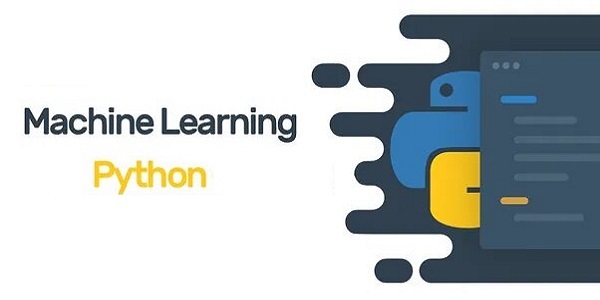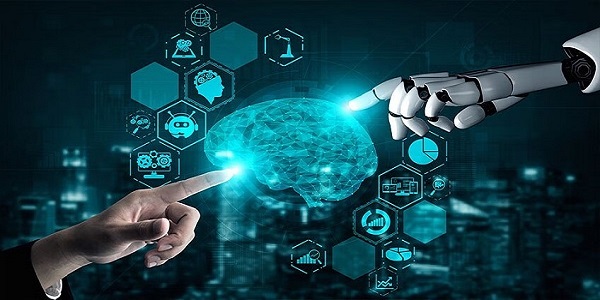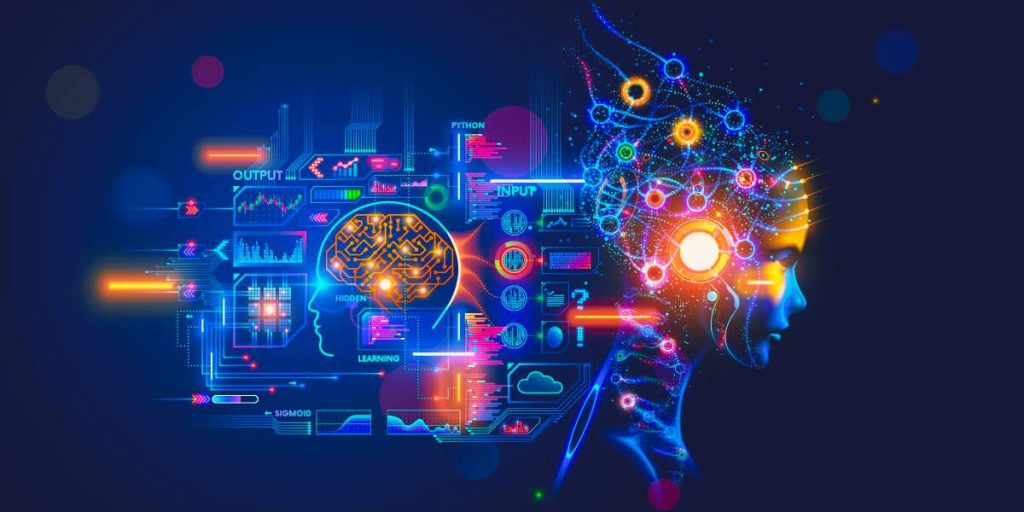Introduction: Machine Learning Techniques in Python
Machine learning is an essential foundation for companies to leverage their data insights and promote innovation in modern business environments. Foundational Machine Learning techniques in Python deliver important assets. It ensemble learning alongside deep learning and time series analysis enhances predictive capability and deep data interpretation capabilities. In this blog we will explore the advanced techniques to find their best implementation platform through Python software development due to its vast library ecosystem.
Machine learning allows computers to develop algorithms which enable them to learn through data processing for decision-making purposes. Machine Learning Development serve multiple industries, including finance, health care, and retail which enable tasks such as customer segmentation, predictive maintenance and personalized marketing. The prediction accuracy improves significantly by integrating ensemble learning with deep learning and time series analysis methods in advanced ML techniques.

At the same time, deep learning examines complex data patterns, and time series analysis handles ordered data points essential for forecasting purposes. Python has gained popularity in ML because of its easy-to-read syntax, extensive community backing, and wide selection of libraries. It includes Scikit-learn, TensorFlow, and Statsmodels, that facilitate advanced Machine Learning techniques in Python and distribution.
Why decision-makers should care about Machine Learning Techniques in Python
Growing Reliance on ML-Driven Insights
Businesses in today’s world depend heavily on Machine Learning techniques in Python to boost decision-making processes across the finance and healthcare sectors as well as the marketing and logistics spheres. Businesses which do not implement cutting-edge ML methods face a disadvantage in operational effectiveness and customer insight generation.
Improving Prediction Accuracy and Efficiency
Basic ML models effectively handle simple tasks, although they demonstrate limited success when processing complex datasets. Combining ensemble learning with deep learning provides advanced Machine Learning techniques in Python that lower model bias and variance and produce more dependable predictions.
Competitive Advantage Across Industries
Companies utilizing advanced Machine Learning techniques in Python receive several advantages, including:
- Fraud detection in finance and banking.
- Personalised recommendations in e-Commerce.
- Automated diagnostics in healthcare.
- The application of optimised supply chain forecasting helps logistic operations.
Ensemble Learning: Enhancing Model Accuracy
1. What is Ensemble Learning?
Ensemble learning merges different base models to create composite models which generate better predictive outcomes than individual models can achieve. Combination models use different individual models’ strengths to overcome weaknesses and minimize overfitting issues.
2. Key Types of Ensemble Methods
A) Bagging (Bootstrap Aggregating): The technique applies independent training to multiple models by randomly selecting training subsets followed by prediction combinations. Users employ Bagging primarily to decrease variation and stop overfitting problems. A widely used illustration of this approach is Random Forest.
Example: The Random Forest method uses decision trees, which receive their training data from random subsets of the information and produce predictions based on averaged outcomes.
B) Boosting (Sequential Learning for Performance Improvement): Through sequential training boosting, each new model can tweak errors that preceding models had failed to correct properly. The technique enhances prediction accuracy because it concentrates on challenging classification cases.
Popular Algorithms
- AdaBoost: Through AdaBoost, weak learners unite to generate a detailed learner.
- Gradient Boosting: Gradient Boosting optimises residual error through iterative processes to minimise it.
- XGBoost: The highly popular competitive Machine Learning XGBoost represents an optimized, efficient version of gradient boosting.
- Stacking (Meta-Learning for Combining Models): Training different models and utilising an additional model to merge their prediction results forms the basis of stacking. Stacking aims to develop a meta-model that uses base model outputs to construct more accurate predictions.
3. Python Implementation of Ensemble Learning
Python for machine learning makes it easy to implement ensemble learning methods through popular libraries such as Scikit-Learn, XGBoost, and LightGBM.
Random Forest Example using Scikit-Learn:
python
CopyEdit
from sklearn.ensemble import RandomForestClassifier
from sklearn.model_selection import train_test_split
from sklearn.datasets import load_iris
# Load dataset
data = load_iris()
X = data.data
y = data.target
# Split data
X_train, X_test, y_train, y_test = train_test_split(X, y, test_size=0.3, random_state=42)# Train model model = RandomForestClassifier(n_estimators=100) model.fit(X_train, y_train)
# Evaluate model
accuracy = model.score(X_test, y_test)
print("Accuracy:", accuracy)Performance Comparison:
When implementing ensemble methods, the accuracy of individual models such as Decision Trees usually amounts to approximately 80% during the initial phase. According to different datasets, Random Forest ensemble methods have demonstrated the ability to achieve accuracy levels above 90%.
Real-World Applications of Ensemble Learning
Multiple domains apply ensemble learning strategies for diverse purposes.
- Fraud Detection: Multiple combined models provide superior fraud detection because they can identify various patterns of fraudulent behavior.
- Recommendation Systems: Combining different recommendation algorithms through ensemble models enhances the accuracy of recommendation predictions.
- Risk Assessment: Combining different models through ensemble methods gives financial risk assessment greater reliability because they pool insights from multiple forecasting tools.
Deep Learning: Unlocking Complex Patterns
1. What is Deep Learning?
Machine learning includes deep learning as a subset through deep neural networks, which possess multiple network layers to analyze complex data patterns. Traditional ML differs from deep learning because the latter expands data processing capabilities for unstructured forms, including images, audio and text.

2. Key Deep Learning Architectures
A) Convolutional Neural Networks (CNNs): CNNs specialize in handling data organized in grid formats such as image data. The convolutional layers enable automatic learning of spatial image hierarchies.
Applications: Image classification, object detection, facial recognition.
B) Recurrent Neural Networks (RNNs) and Long Short-Term Memory (LSTM): RNN architecture helps them process sequential data, including an output response that depends on past input values. The researchers used a variation of recurrent neural networks in their LSTM architecture to address the gradient fading issue which arises in long sequences.
Applications: Speech recognition, language modelling, and time series forecasting.
C) Transformers and Attention Mechanisms: BERT, GPT, and similar deep learning models use transformers and attention mechanisms to process sequential data effectively.
3. Python Implementation of Deep Learning
Using TensorFlow and Keras, we can build a simple deep learning model:
import tensorflow as tf
from tensorflow import keras
from tensorflow.keras import layers
from sklearn.model_selection import train_test_split
from sklearn.preprocessing import StandardScaler
import numpy as np
# Generate synthetic dataset
X = np.random.rand(1000, 10)
y = (X.sum(axis=1) > 5).astype(int)
# Split data
X_train, X_test, y_train, y_test = train_test_split(X, y, test_size=0.2, random_state=42)
# Normalize data
scaler = StandardScaler()
X_train = scaler.fit_transform(X_train)
X_test = scaler.transform(X_test)
# Build neural network
model = keras.Sequential([
layers.Dense(32, activation='relu', input_shape=(10,)),
layers.Dense(16, activation='relu'),
layers.Dense(1, activation='sigmoid')
])
model.compile(optimizer='adam', loss='binary_crossentropy', metrics=['accuracy'])
# Train model
model.fit(X_train, y_train, epochs=10, batch_size=32, validation_data=(X_test, y_test))
# Evaluate model
loss, accuracy = model.evaluate(X_test, y_test)
print(f"Test Accuracy: {accuracy:.2f}")
The illustration shows a feedforward neural network built for binary classification through TensorFlow with Keras.
4. Real-World Applications of Deep Learning
- Healthcare Diagnostics: Deep learning models utilise medical images to help healthcare professionals diagnose diseases, particularly in cancer cases.
- Autonomous Systems: Deep learning enables fully autonomous vehicles by assisting them with interpreting sensor data to make instant decisions.
- Customer Behavior Prediction: Buildings use deep learning to foresee customer conduct patterns and anticipate their upcoming actions.
Time Series Analysis: Forecasting with Precision
1. Understanding Time Series Data
Time series data consists of observations collected at regular intervals over time, and it often holds three key characteristics: seasonality, stationarity, and trend. By analyzing this data, tasks like demand forecasting, stock market predictions, and weather forecasting become more accurate and insightful. If you’re passionate about diving into the world of time series analysis and want hands-on expertise, a data analyst course with placement can equip you with the essential skills, real-world experience, and job opportunities to excel in this growing field.
2. Popular Time Series Forecasting Techniques
- Autoregressive Integrated Moving Average (ARIMA)
ARIMA stands as a strong statistical approach for performing time series forecasting tasks. AR terms, differenced data, and moving average components enable this model to forecast past relationships. ARIMA succeeds best when operating on data sequences that display regular trends and periodic behaviour.
- Exponential Smoothing Methods
Exponential smoothing via the Holt-Winters method is a popular method for extracting both level and trend data alongside seasonality elements from time series data. The method serves well for making predictions about business measurements, including demand and sales.
- Recurrent Neural Networks (RNNs) & LSTMs for Time Series
RNNs and LSTMs from deep learning demonstrate outstanding capabilities in finding long-range dependencies that exist in sequential patterns of information. LSTMs solve problems with gradient disappearing in classic RNN designs, allowing them to produce successful forecasts for stock market data, energy use, and traffic flow metrics.
3. Python Implementation of Time Series Forecasting
Using libraries such as Statsmodels, Prophet, and TensorFlow, Python makes it easy to forecast time series data.
ARIMA Example using Statsmodels:
import pandas as pd
import numpy as np
from statsmodels.tsa.arima.model import ARIMA
# Generate synthetic time series data
date_rng = pd.date_range(start='1/1/2020', end='1/1/2023', freq='M')
data = pd.Series(np.sin(np.linspace(0, 50, len(date_rng))) + np.random.normal(scale=0.5, size=len(date_rng)), index=date_rng)
# Fit ARIMA model
model = ARIMA(data, order=(2,1,2))
model_fit = model.fit()
# Forecast future values
forecast = model_fit.forecast(steps=12)
print(forecast)
This script fits an ARIMA model to synthetic time series data and forecasts future values.
4. Real-World Applications of Time Series Analysis
- Stock Market Predictions: Time series forecasting models are widely used in financial markets to help traders make stock market predictions and investment prospects.
- Demand Forecasting: Both businesses and organisations use time series analysis to estimate product demand levels to improve inventory control methods.
- Weather Predictions: Meteorologists implement time series forecasting models for predicting weather conditions.
Right Machine Learning Techniques in Python for Business
Three primary elements define the choice of an effective Machine Learning techniques in Python: data properties, computing resources, and business goals. Here’s a comparison:
| ML Technique | Best For | Advantages | Challenges |
| Ensemble Learning | Structured data, tabular datasets | High accuracy, reduces overfitting | Computationally expensive |
| Deep Learning | Image, text, complex patterns | Automatic feature extraction, scalable | Requires large datasets, difficult to interpret |
| Time Series Analysis | Temporal data, forecasting | Captures trends, seasonality | Sensitive to noise, requires proper tuning |
Organizations should create their ML strategy by matching it to corporate purposes while examining data accessibility requirements, accuracy levels, and interpretability possibilities.
Guidelines for Selection
The selection of an ML approach depends on these critical factors for decision-makers:
- Nature of Data: The data is either structured or unstructured, between numerical sales records and pictures and textual content.
- Computational Complexity: The need for powerful computing capability represents a major difference between deep learning and traditional ML since traditional approaches function effectively on regular hardware.
- Model Interpretability: For regulatory compliance purposes, businesses require interpretable models, making simpler ML models more appropriate than deep learning.
Key Considerations of Machine Learning Techniques in Python
The deployment of Machine Learning techniques in Python requires organisations to evaluate various trade-offs between different factors.
- Data Availability: Businesses must guarantee sufficient high-quality data for effective training operations.
- Accuracy vs Interpretability: Deeper learning methods deliver better accuracy, but their interpretability remains limited, thus posing challenges for industries under regulatory oversight.
- Scalability & Cost: Businesses need to invest in extensive infrastructure together with additional expertise because advanced Machine Learning techniques in Python results long-term return on investment changes.
Challenges and Best Practices in Advanced ML
Common Challenges of Machine Learning Techniques in Python
1) Overfitting: A system that fits historical data excessively will perform poorly when encountering new data records.
Solution: Use regularization, dropout techniques, and cross-validation
2) Model Interpretability: Multiple deep learning models operate as uninterpretable systems, making understanding their predictive actions difficult.
Solution: Implementing explainable AI procedures SHAP (Shapley Additive Explanations) and LIME (Local Interpretable Model-Agnostic Explanations) resolves this issue.
3) Data Quality Issues: Models built with poor quality or biased data may produce unreliable output.
Solution: Preprocess data with normalization, missing value handling, and outlier detection.
Best Practices of Machine Learning Techniques in Python
1) Regular Model Retraining: The system requires periodic model updates using fresh data to sustain its predictive accuracy.
2) Hyperparameter Tuning: Improving learning rates, tree depths and neural network layers through optimization produces better performance.
3) Real-World Validation: Testing models in their operational environment must always precede the complete deployment.
Conclusion
Businesses that adopt these modern Machine Learning techniques in Python will discover new possibilities while improving their decision quality through enhanced innovation. The combination of ensemble learning models with deep learning algorithms and time series forecasting methods grants businesses the power to generate new innovations while making their choices based on data. The Python development framework contains an extensive collection of tools which enable efficient model implementation.
Read more:



